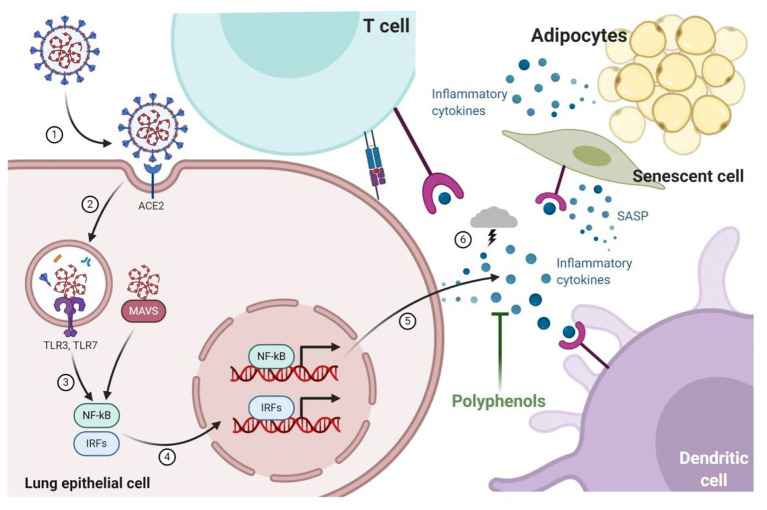Figure 1.
Infection of pulmonary epithelial cells occurs through the interaction of the spike glycoprotein envelope (S-protein) with the angiotensin I converting enzyme (ACE)-2 receptor that allows viral replication and triggers mechanisms to combat infection by the host cells thought toll-like receptors (TLRs) and mitochondrial antiviral-signaling protein (MAVS). Cytokines pro-inflammatory are produced by nuclear factor kappa -B (NF-kB) and interferon-regulatory factors (IRFs) signaling pathways recruiting more immune cells (dendritic cell and T-cell) to lungs. Recruited immune cells increased cytokine production resulting in a cytokine storm that is associated with a worse prognosis of infected patients. During aging and obesity, the production of pro-inflammatory cytokines and the establishment of low-grade systemic inflammation are also observed. The expression of components of the renin-angiotensin-aldosterone system, such as ACE2, is also modified by aging and obesity, which could explain why elderly and obese patients are affected and headed the death statistics by COVID-19. Dietary bioactive substances such as polyphenols are able to block the production of cytokines by senescent cells (senescence-associated secretory phenotype; SASP) and adipocytes, as well as modify the ACE-1/ACE-2 ratio, which can potentially result in beneficial effects in COVID-19.

